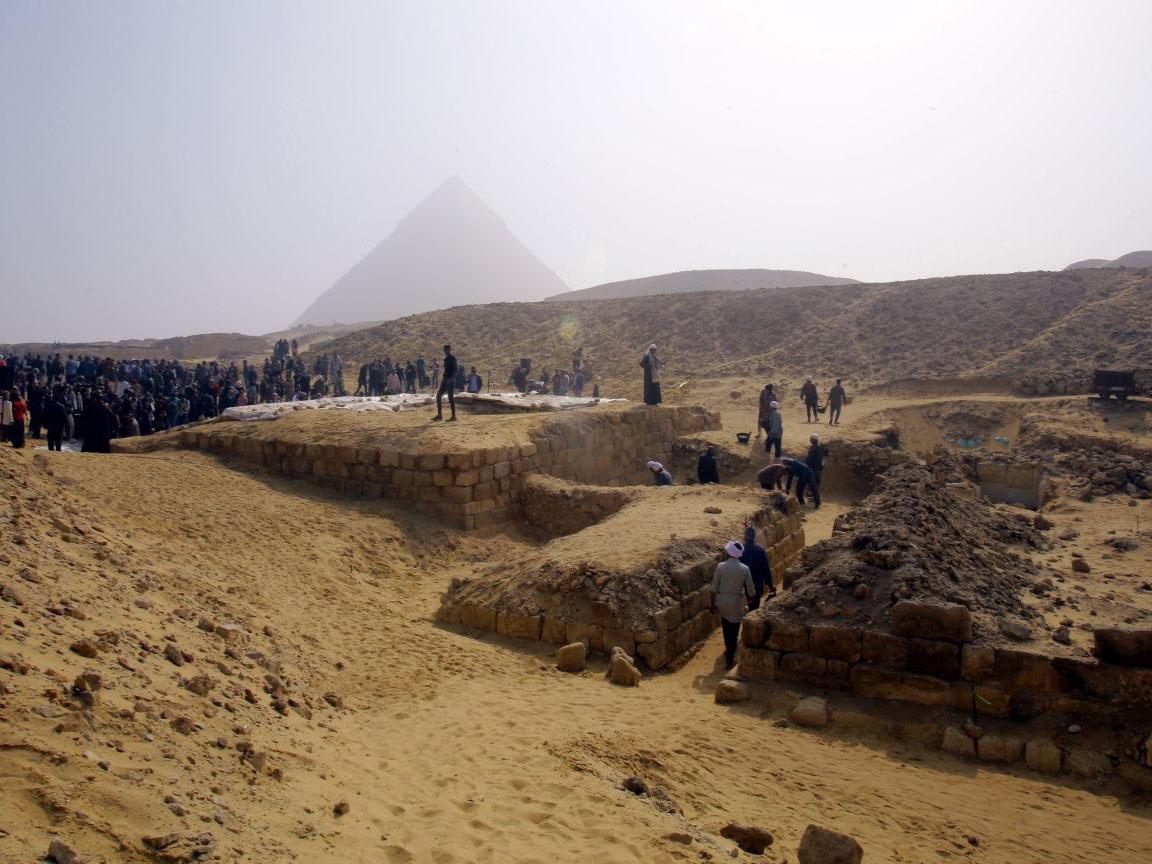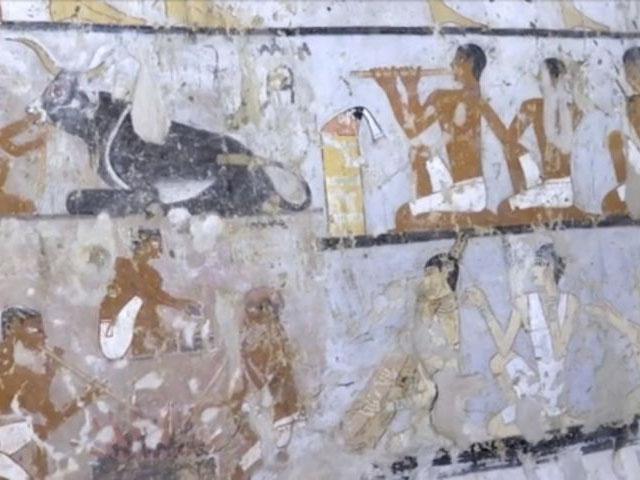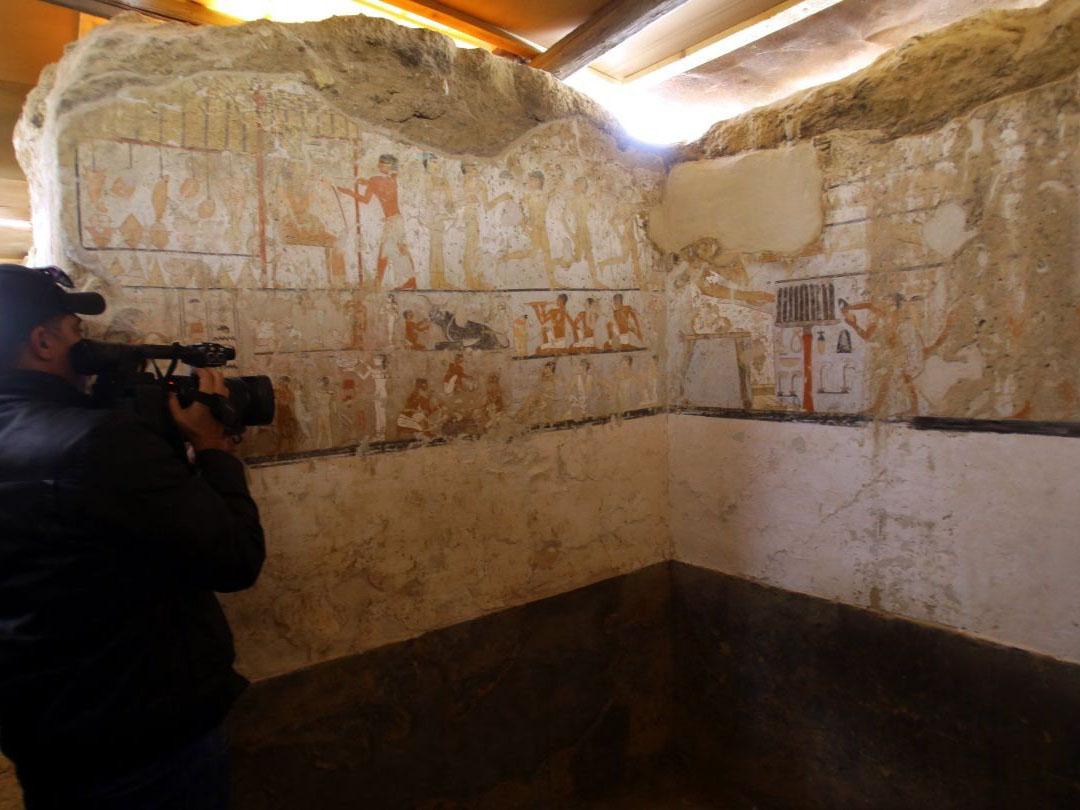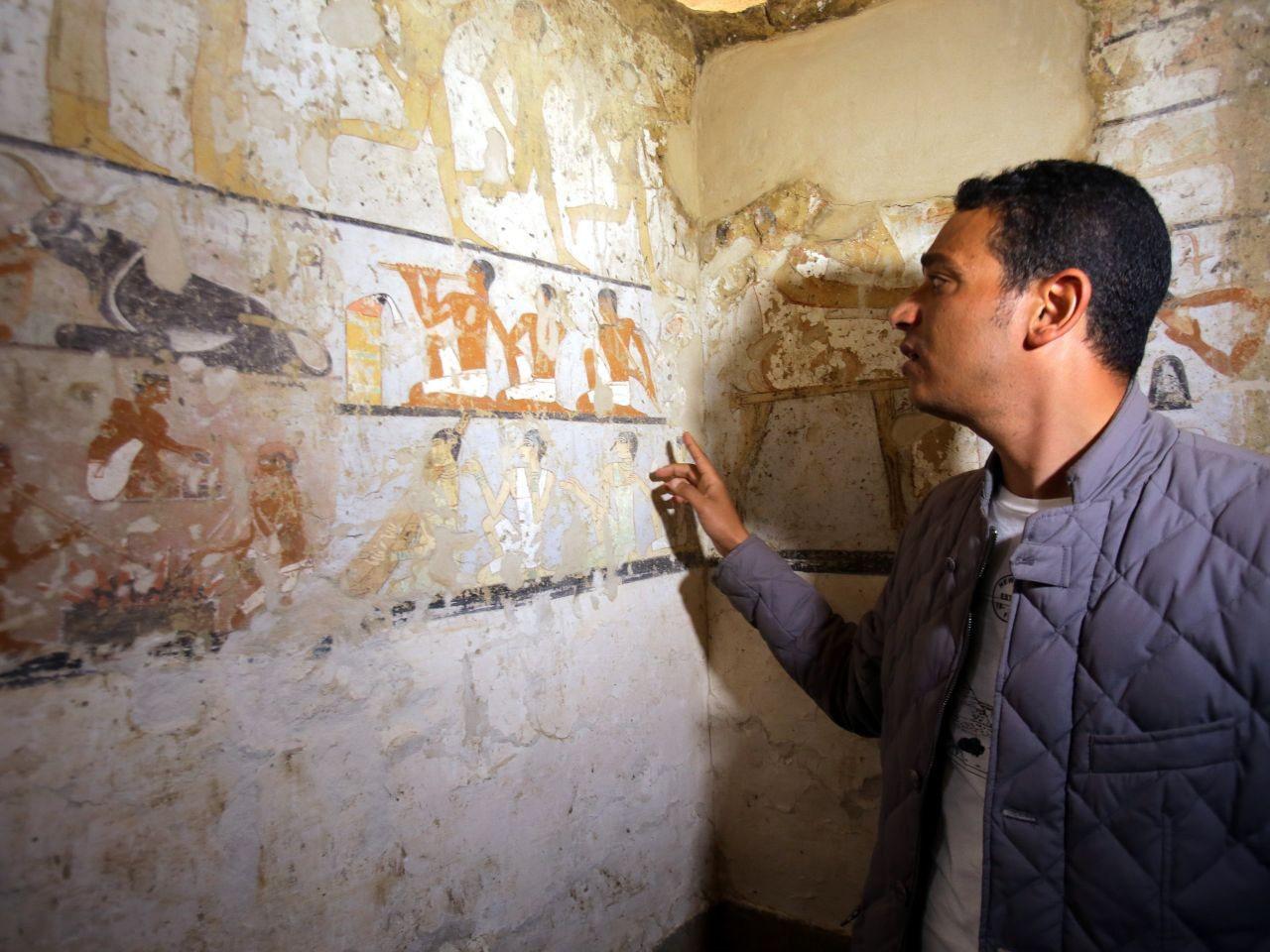Egypt: Archaeologists discover priestess' 4,400-year-old tomb near pyramids outside Cairo
'This is a very promising area. We expect to find more'

Your support helps us to tell the story
From reproductive rights to climate change to Big Tech, The Independent is on the ground when the story is developing. Whether it's investigating the financials of Elon Musk's pro-Trump PAC or producing our latest documentary, 'The A Word', which shines a light on the American women fighting for reproductive rights, we know how important it is to parse out the facts from the messaging.
At such a critical moment in US history, we need reporters on the ground. Your donation allows us to keep sending journalists to speak to both sides of the story.
The Independent is trusted by Americans across the entire political spectrum. And unlike many other quality news outlets, we choose not to lock Americans out of our reporting and analysis with paywalls. We believe quality journalism should be available to everyone, paid for by those who can afford it.
Your support makes all the difference.Egyptian archaeologists say they have discovered a 4,400-year-old tomb near the pyramids outside Cairo.
The Egyptian Antiquities Ministry announced the find on Saturday, saying the tomb was likely to have belonged to a high-ranking official known as Hetpet during the Fifth Dynasty of Egypt.
It includes wall paintings depicting Hetpet observing different hunting and fishing scenes.
Mostafa Al-Waziri, leader of the archaeological mission, says the scenes depicted a monkey – at the time commonly kept as domestic animals – reaping fruit and another dancing before an orchestra.
He believes Hetpet, a woman thought to be close to ancient Egyptian royals, had another tomb in Giza's western necropolis, which is home to the tombs of top officials from the Old Kingdom of Egypt.
Mr Al-Waziri says excavation work is under way for the other tomb.

“This is a very promising area. We expect to find more," he told reporters at the site.
“We have removed between 250-300 cubic metres of layers of earth to find the tomb.”
“What we see above the earth's surface in Egypt doesn't exceed 40 per cent of what the core holds."
It is believed Hetpet was a priestess for the fertility goddess Hathor, who ancient Egyptians believed protected women in childbirth. She was already known to Egyptologists due to the surviving records.
The tomb was found on a site which housed officials from the Old Kingdom’s Fifth Dynasty from between 2,500 and 2,300 BC.
Archaeologists have been excavating tombs on the site since 1842.
Egyptian Antiquities Minister Khaled al-Anani said: “We know of course that she was a high official and that she had a strong link with the royal palace."

He told the BBC the tomb “has the architectural style and the decorative elements of the Fifth Dynasty, with an entrance leading to an 'L' shaped shrine”.
The pyramids of Giza house some of the most famous ancient tombs in Egypt. The majority of the tombs so far excavated were for pharaohs and their consorts, but high-ranking officials and important priests could also be given lavish burial chambers.
The Giza complex is home to the Great Pyramid of Giza or the Pyramid of Khufu, which is regarded as one of the Seven Wonders of the Ancient World. It is the oldest and the only one to remain mostly intact.

In November last year, scientists scanning the pyramid with the latest imaging technology found a 30m long void inside the thick walls of the pyramid.
The Great Pyramid also contained three previously discovered rooms, the king’s chamber, a smaller queen’s chamber and a passageway called the Grand Gallery, but the finding marked the first major space found inside an ancient structure since the 19th century.
Join our commenting forum
Join thought-provoking conversations, follow other Independent readers and see their replies
Comments